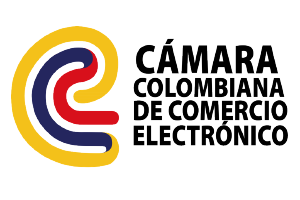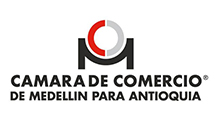Economic insolvency in Colombia is regulated by Law 1116 of 2006. It is a special regime that seeks to protect the company’s credit and to promote its conservation and recovery from the perspective of the company as a unit of economic exploitation and as a source of employment. This regime favors commercial and patrimonial relations between companies as long as they have been established in good faith and, if not, penalizes them. It can be carried out through two mechanisms: reorganization and judicial liquidation.
Through the reorganization process, the government seeks, by means of an agreement, that the companies that are viable can be preserved and normalize their commercial and credit relations. This is done through an internal restructuring, both operational and administrative, of its assets and liabilities.
Requirements:
- The time limit set forth in the law for the enervation of the grounds for dissolution should not have expired, without having taken all the measures to remedy them.
- The company must be registered with the competent authority.
- When the debtor has pension liabilities under its responsibility, it must have the actuarial calculation approved and must be up to date with the payment of pension payments, bonds and pension securities due.
- The company may not have overdue obligations for mandatory withholdings, in favor of tax authorities, but discounts given to workers or for contributions to the Social Security System.
Procedure:
The process consists of several steps that will be described below:
- A written request must be submitted to a conciliation center expressly authorized by the Ministry of Justice or to a notary’s office, which must also be expressly authorized. The application must contain:
- Report on the causes that led the company to default on payments.
- Proposal of a clear and objective negotiation plan.
- List of creditors in order of priority (with their respective name, address and e-mail address) differentiating between principal and interest, establishing the nature of the credit, its date of granting and its maturity date. It must also contain information on the co-debtors, guarantors or guarantors of each of the credits.
- Detailed and complete list of the debtor’s assets, expressly stating the identification data of the property, the encumbrances, precautionary measures and affectations on it and it must be indicated if they are for family housing or if they are family property that cannot be seized.
- List of legal proceedings or other proceedings of a patrimonial nature in which the debtor is involved, indicating the courts in which they are pending and their current status.
- Certificate of income of the debtor.
- The request will be assigned to a conciliator registered at the conciliation center or notary’s office.
- Subsequently, a fee must be paid at any of the offices of the Chamber of Commerce, presenting the communication sent by the conciliator evidencing the amount to be paid.
- After payment, the conciliator will have a maximum of 5 days to approve the application and set a hearing date.
- The negotiation must take place during the hearing, which may take up to 60 days and may be extended for another 30 days.
- The hearing may culminate in an agreement and, if so, the conciliator must verify and follow up on compliance with the agreement.
Costs:
Fees are calculated as follows:
- If the principal amount of the credits that are in charge of the debtor is one smlmv or less, the applicable rate will be 0.18 smlmv.
- When it exceeds the minimum wage but does not exceed 10 or is equal to this value, the rate will be up to 0.7 smlmv.
- If it exceeds 10 smlmv and is less than or equal to 20 smlmv, the maximum rate will be 1 smlmv.
- In case the rate exceeds 20 smlmv, for each 20 smlmv or fraction thereof, the rate will be increased by 1.5 smlmv but may not exceed 30 smlmv.
Possibilities:
- Company restructuring: consists of an internal change in the company’s operation. This may be due to external and external causes or to internal causes such as financial difficulties. This process can be in one area of the company or in several and can last between 1 and 3 years.
- Corporate reorganization: refers to the insolvency law itself. It is a process that allows the company to renegotiate its debts and can last a maximum of 6 months.
- Business recovery: this procedure allows the sale of fixed assets of the company as long as they are not necessary for its operation. It is processed before the Chamber of Commerce and can have a maximum duration of 3 months.


Benefits:
It allows companies to reorganize the payment of their debts through agreements with their creditors and to modify the amount and term previously negotiated. Public services may not be suspended once the process is initiated.
Nor may executive, restitution of payment for royalties or voluntary jurisdiction proceedings be carried out against the debtor. All processes of this nature that the company was carrying out or in which it was involved at the time of initiation of the process will be suspended.
Restrictions:
The company may not dispose of its assets once the insolvency process has been initiated.
REFERENCES:
- Carried out by: Insolvency Colombia. (2020, October 22). LAW 1116 of 2006 Corporate Insolvency – Insolvencia Colombia Bogotá, Colombia. Insolvency Colombia. https://insolvenciacolombia.com/case/ley_insolvencia_1116/?gclid=CjwKCAiArY2fBhB9EiwAWqHK6r4k33bKrf1tp3–KLslb3L1d8aw5yV3J0nc48wId6oDLS1FDp7AtBoCY6MQAvD_BwE
- (2021, July 28). Economic Insolvency Law: what is it and who can apply it in Colombia? Semana.com Latest News from Colombia and the World. https://www.semana.com/economia/finanzas-personales/articulo/ley-de-insolvencia-economica-que-es-y-quienes-pueden-aplicar-en-colombia/202135/
- Legal&Nbsp, C. (2021, July 29). How and when to apply for insolvency law? El Tiempo. https://www.eltiempo.com/justicia/servicios/ley-de-insolvencia-economica-cuando-y-como-aplicar-606053
- (2016, 10 September). Basic Manual on Corporate Insolvency. Insolvency.co. https://www.insolvencia.co/manual-basico-de-insolvencia-empresarial/
- Insolvency Service – Chamber of Commerce. (n, f.). https://www.camaramedellin.com.co/arbitraje-y-conciliacion/insolvencia
- Abogados, R. (2023, February 9). The corporate restructuring process. Rodenas Abogados. https://www.rodenasabogados.com/reestructuracion-empresarial/#Como_hacer_una_reestructuracion_empresarial
- Decree 560 of 2020 – Regulatory Manager. (2021, November 16). Civil Service. https://www.funcionpublica.gov.co/eva/gestornormativo/norma.php?i=113637#:~:text=I%20could%20defer%20the%20payments,the%20social%20security%20system%20.



